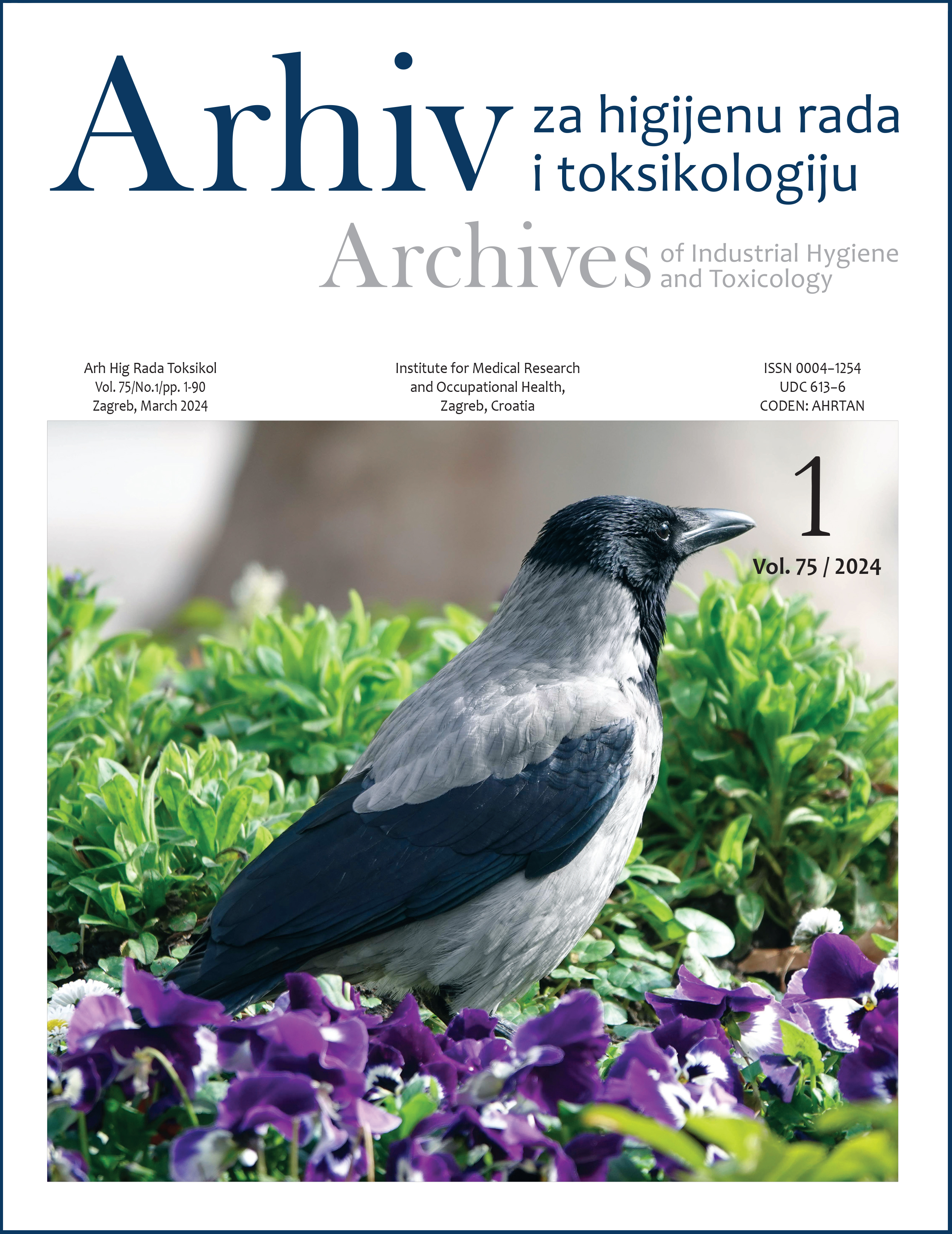Nanoplastics increase in vitro oestrogenic activity of neurotherapeutic drugs
DOI:
https://doi.org/10.2478/aiht-2024-75-3818Keywords:
polystyrene, carbamazepine, fluoxetine, oestrogen receptors, T47D-KBluc cell lineAbstract
Environmental pollution with plastic nanoparticles (PNPs) has rendered hazard assessment of unintentional human exposure to neurotherapeutic drugs through contaminated water and food ever more complicated. Due to their small size, PNPs can easily enter different cell types and cross different biological barriers, while their high surface-to-volume ratio enables higher adsorption of chemicals. This is how PNPs take the role of a Trojan horse as they enhance bioaccumulation of many different pollutants. One of the health concerns related to water pollution with neurotherapeutic drugs is endocrine disruption, already evidenced for the anticonvulsant drug carbamazepine (Cbz) and antidepressant fluoxetine (Flx). Our study aimed to evaluate endocrine disrupting effects of Cbz and Flx in mixtures with polystyrene nanoparticles (PSNPs) using the in vitro luciferase assay to measure oestrogen receptor activity in T47D-KBluc cells treated with Cbz-PSNPs or Flx-PSNPs mixtures and compare it with the activities observed in cells treated with individual mixture components (Cbz, Flx, or PSNPs). Dose ranges used in the study were 0.1–10 mg/L, 1–100 µmol/L, and 0.1–10 µmol/L for PSNPs, Cbz, and Flx, respectively. Our findings show that none of the individual components activate oestrogen receptors, while the mixtures induce oestrogen receptor activity starting with 0.1 mg/L for PSNPs, 10 µmol/L for Cbz, and 0.5 µmol/L for Flx. This is the first study to evidence that PSNPs increase oestrogen receptor activity induced by neurotherapeutic drugs at their environmentally relevant concentrations and calls for urgent inclusion of complex mixtures in health hazard assessments to inform regulatory response.














